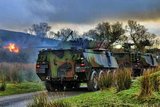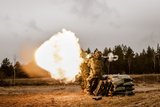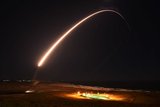LandWarNet 2011: Chiefs herald signals change
US Army signals regiments are undergoing a sea-change in the way they train, learn and are equipped, according to senior service officials.
Speaking at the LandWarNet conference in Tampa on 23 August, service chiefs warned that signals units would see 'changing equipment, training and education' and stressed that such changes in the way the regiments were employed would be 'for the better'.
'Change is coming,' urged Maj Gen Alan Lynn, Chief of Signal for the US Army and Commanding General of the army's Signal Center of Excellence. 'The way soldiers learn is also changing,' he added while describing how training was becoming more 'virtualised'.
'Soldiers like to learn on their applications and we are developing apps as well which are available on iPhone and android stores. We are testing these at Network Integration Evaluation [NIE] and are looking at androids, iPhones and other types of equipment,' he continued. 'Soldiers at squad level want to use equipment at that level so there's a lot of interest in it'.
Meanwhile, Lt Gen Susan Lawrence, US Army Chief Information Officer described her pride in the changing signals regiments and said they had progressed from a 'D-minus' through an 'A' grade. She also described the ongoing NIE exercises at Fort Bliss, New Mexico as 'very important' for the future of signalling.
'Taking equipment out of the inventory of Brigade Combat Teams and standing up networks that they saw when deployed is putting new technology into the hands of soldiers and getting immediate feedback,' she continued.
Finally, Lawrence said it was important to support the soldiers at 'point' on operations along the Afghanistan and Pakistan border for example, allowing them to connect to the network and call for fire support and medical evacuation for example.
More from Digital Battlespace
-
![Babcock nears first customer for Nomad AI translation tool]()
Babcock nears first customer for Nomad AI translation tool
Nomad can provide militaries with real-time intelligence, saving critical time on the battlefield.
-
![AUSA 2025: Israel’s Asio Technologies to supply hundreds of improved Taurus tactical systems]()
AUSA 2025: Israel’s Asio Technologies to supply hundreds of improved Taurus tactical systems
Taurus operates alongside the Israel Defense Forces’ Orion system which supports mission management across tens of thousands of manoeuvring forces, from squad leaders to battalion commanders.
-
![AUSA 2025: Kopin pushes micro-LED plans as China moves faster]()
AUSA 2025: Kopin pushes micro-LED plans as China moves faster
The plan for the new displays follows fresh investment in Kopin’s European facilities by Theon and an order for head-up displays in fielded aircraft, with funding from the US Department of Defense.
-
![AUSA 2025: Persistent Systems to complete its largest order by year’s end]()
AUSA 2025: Persistent Systems to complete its largest order by year’s end
Persistent Systems received its largest ever single order for its MPU5 devices and other systems earlier this month and has already delivered the 50 units to the US Army’s 4th Infantry Division.
-
![Aselsan brings in dozens of companies and systems under the Steel Dome umbrella]()
Aselsan brings in dozens of companies and systems under the Steel Dome umbrella
Turkey has joined the family of countries attempting to establish a multilayered air defence system with government approval in August 2024 for the effort landed by Aselsan. Dubbed Steel Dome, the programme joins Israel’s Iron Dome, the US Golden Dome, India’s Mission Sudarshan Chakra and South Korea’s low-altitude missile defence system.
-
![DSEI 2025: MARSS unveils new agnostic multidomain C4 system]()
DSEI 2025: MARSS unveils new agnostic multidomain C4 system
MARSS’ NiDAR system has been deployed using sensors from static platforms to provide detection and protection for static sights, such as critical infrastructure, ports and military bases.




























